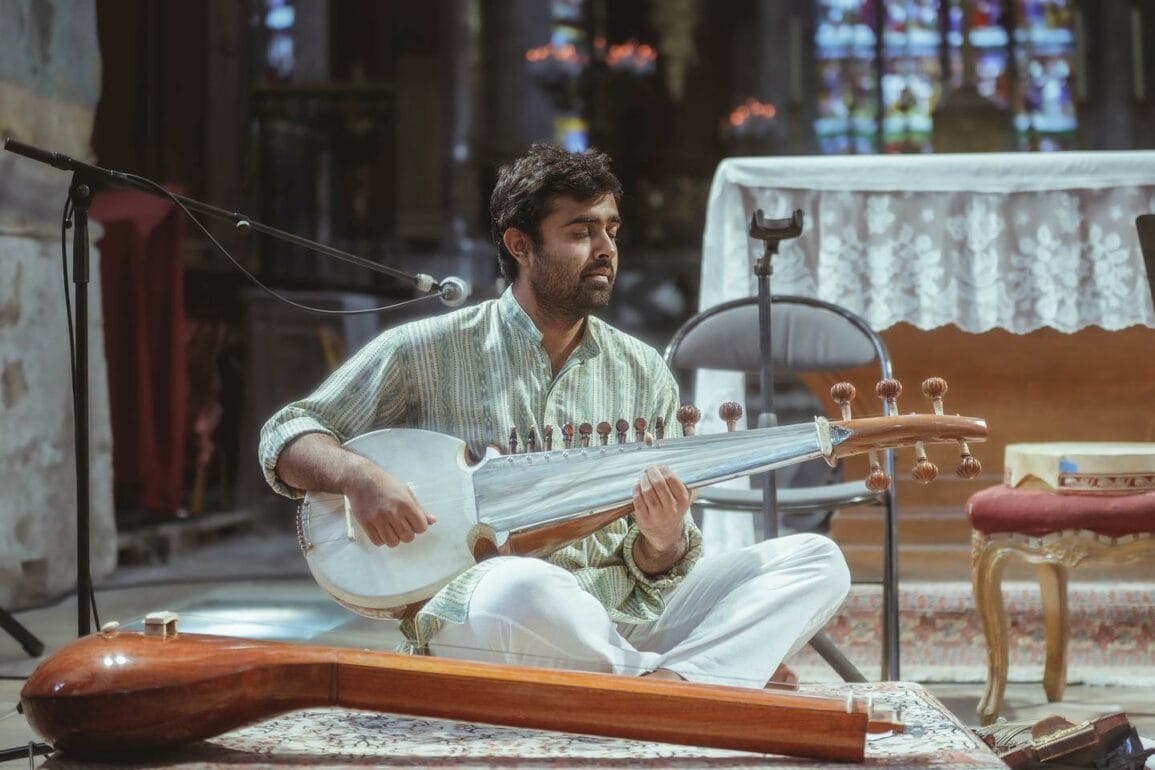Reflections

I’m sure I’m not the only one drawn to a wide palette of music, with Spotify, Apple Music, and others enabling us to indulge in our musical tastes, experimentations, and voyages. Our mini sonic labs allow us countless ways to treat and create our internal and external contexts, and we’ve had the chance to up our personal DJing skills since.
Like many of my generation, I too ran far and fast from the world of Hindustani Classical music through most of my childhood and teenage years. Despite being exposed to plenty of it at home and learning some vocal music, the tabla, and the sarod, it wasn’t cool at a time when we would turn up our noses at anything with a whiff of the sacred, ritualistic displays, pompousness, ultra-seriousness, intensity, and repetitiveness. The abuse of the guru-shishya parampara, the discipline that resembled submissiveness, and its practices that threaten as a form of condescension, even outright control if given an inch.
But a swar ka pujari, as several Hindustani musicians like to describe themselves, is merely someone who has immense belief in the power of music, and of them, there are ample examples across traditions. The study of Western classical music took me to France to explore the world of vocal music, opera, art song, oratorio, and unsurprisingly (in hindsight), it is where Hindustani Classical music found me once again. Perhaps it was homesickness, a longing to be with something familiar, but as often happens, learning something new also shed a very different light on the familiar. At the risk of sounding like a glib, wide-eyed brat who has just discovered the allure of Eastern mysticism, it was a time when I was engulfed in the awe-inspiring smoke and mists of Raga music. Through my phone, I discovered its ethereal valleys and oceanic crevasses inhabited by the Khan-sahib’s, Surashri’s, Begums, and Panditjis, all part of an oral tradition that dates back centuries.
Western vocal music treatises regarded the text as leading the music, and this gave me a clue to the suspicion that had long lingered inside me: that Hindustani music, or perhaps more precisely, the Khyal genre, gives primary importance to the swaras.
I remember a class with a vocal teacher at one of Paris’s conservatories where, after hearing me, she remarked, “The music is not in the notes.” Even after considering all the things that she may have meant by this and agreeing with it partially, it is impossible for her words to sit comfortably with me syntactically. To find personal expression is important, to introspect and give our energy to the notes, but this involves developing a level of intimacy with the swaras. It would be wrong to consider that Western musicians do not carry out this practice, but perhaps her words were another clue to fundamental differences in the way notes are caressed that are discernible across musical cultures.
Ragas are touted as being “natural” entities and not objects, discovered, not created. Their true nature is revealed rather than actively understood, and while this may have the appearance of an esoteric and romantic tendency in the Hindustani tradition, it is what keeps the form intact. An instinctive reverence for each note is connected to the way that they find meaning within each Raga.
It’s very slowly that the skilled spontaneity of the artists, the sophistication of their melodic and rhythmic movements, the conscious architectural exposition of the Raga, and the subtlety of the emotional essences or rasas that they are meant to evoke began to show me the richness of expression of the individual’s inner world that the form allows for; it had needed a marked shift in my way of seeing and being in time. Having grown up with it, I had to overcome my preconceived notions and biases towards the genre to rediscover it objectively. Among other aspects it was important to be aware of the general caricaturing of the Hindustani classical space, and the emphasis on technically impressive passages which I find has managed to bend away focus from the more suave and communicative aspects of the music.
Music for me is a powerful tool for empathy and connection, and learning through difference, multiple viewpoints, and nuances in expression are invaluable tools for better living and our evolution as arts practitioners. Journeys were of course, never meant to be easy, but always colourful.




